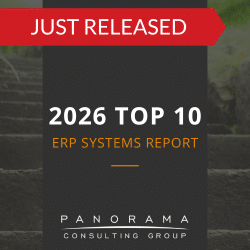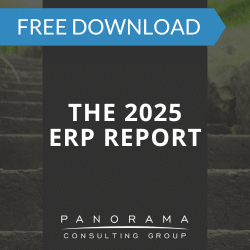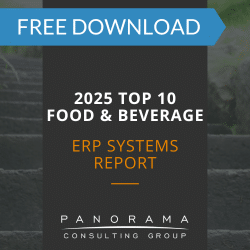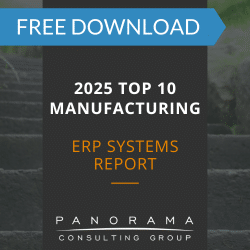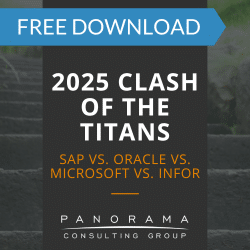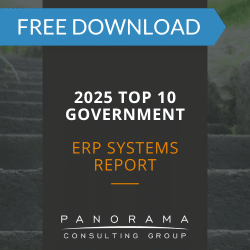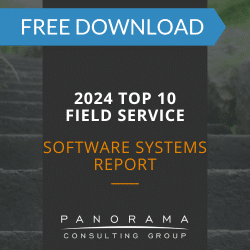Key Takeaways:
- ERP systems often fail to deliver true procurement visibility due to scattered supplier data and inconsistent spend classification.
- Indirect purchases are frequently hidden outside ERP processes, creating blind spots that block cost control and compliance.
- Poor integration between procurement and inventory modules leads to excess stock, missed reorder points, and unexplained variances.
When executives evaluate ERP systems, they often highlight procurement visibility as a key objective. However, once implementation begins, it tends to lose priority.
After go-live, many organizations see that important supplier data is scattered, indirect spending is unclear, and risk signals are hidden in spreadsheets and separate systems.
Procurement visibility challenges are among the most persistent drivers of ERP failure. From poor supplier onboarding to late-stage sourcing disruptions, these challenges expose organizations to risk long after the software selection team has moved on.
This post outlines five common procurement data gaps that executives and IT leaders must address across both ERP selection and implementation phases.
Contemplating litigation?
We have multiple software expert witnesses available for provision of reports, depositions, and testimonies.
5 Procurement Data Gaps
1. Missing or Incomplete Supplier Risk Profiles
ERP systems often include supplier master data, but that does not mean they provide true risk visibility. A mature supplier profile should reflect financial stability, quality history, delivery performance, and ESG compliance—not just a name, contact number, and tax ID.
Our enterprise software expert witness team has seen dozens of ERP project recovery efforts triggered by post-launch surprises in the supply base.
Executives should not assume that supplier data will self-correct post-go-live. During ERP selection, teams must test how each system supports supplier risk scoring, third-party data enrichment, and alerts.
Strategic Recommendation: Integrate supplier risk assessments directly into the ERP master data model. Consider using external data providers (e.g., credit ratings, watch lists) and ensure procurement teams are trained to manage risk signals.
2. Inconsistent Procurement Taxonomies Across Business Units
During ERP implementations, organizations frequently overlook the need to standardize procurement categories. This creates ERP data gaps in procurement where similar items are labeled differently across business units, obscuring leverage points and distorting spend analytics.
This issue is particularly acute in organizations that have grown through M&A. Our ERP advisory team often finds that the ERP systems inherited from acquired companies reflect wildly different data structures.
Strategic Recommendation: During ERP selection and pre-implementation, establish a unified taxonomy for procurement categories. Use spend normalization tools to align historical data before migration, and test how well the ERP can enforce categorization standards post-go-live.
3. Blind Spots in Indirect Spend Visibility
Many ERP platforms handle direct procurement well—managing purchase orders, supplier schedules, and raw materials. However, indirect spend often remains buried in expense reports, one-off invoices, and rogue purchasing outside the system.
For example, we worked on a public-sector ERP project recovery where the purchasing team lacked a consolidated view of historical vendor activity to control indirect spend. By centralizing information that had previously been scattered across emails and spreadsheets, we helped the organization close a critical procurement visibility gap and improve both negotiation leverage and budget control.
Strategic Recommendation: Treat indirect spend as a first-class data domain. Ensure the ERP solution enables detailed tracking of indirect purchases, enforces catalog-based buying, and includes indirect categories in procurement dashboards and analytics.
4. Weak Integration Between Procurement and Inventory Data
Procurement visibility challenges often stem from a lack of integration between procurement modules and inventory management. In some ERP systems, these functions exist on different platforms, making it difficult to reconcile what was ordered, received, and consumed.
This gap leads to surplus inventory, missed reorder points, and slow-turn stock that procurement teams cannot easily explain. In industries like manufacturing or distribution, this becomes a costly operational drag.
Our ERP project recovery team frequently uncovers these issues during diagnostic assessments. Often, the problem is not a technical defect but a missed opportunity to align inventory rules and procurement workflows during configuration.
Strategic Recommendation: Ensure that procurement and inventory functions are fully synchronized in the ERP environment. Validate that receipt, inspection, and issue processes are reflected in procurement dashboards and that purchasing decisions are guided by real-time inventory signals.
5. Lack of Real-Time Supplier Collaboration Tools
In modern supply chains, procurement is no longer a back-office function. It requires real-time collaboration with suppliers.
Unfortunately, many ERP systems still lack intuitive supplier portals or rely on email-based communication, introducing latency and error.
Strategic Recommendation: Evaluate whether your ERP platform supports supplier collaboration, not just procurement processing. Prioritize tools that allow two-way communication, real-time status updates, and shared visibility into forecasts, quality issues, and capacity constraints.
Visibility Is a Governance Issue, Not Just a Software Feature
Executives must recognize that procurement visibility challenges are symptoms of deeper alignment gaps between people, processes, and data governance. ERP data gaps in procurement cannot be patched with reports alone. They require rethinking how supplier data is collected, validated, and operationalized across the enterprise.
That is why ERP selection must begin with a clear articulation of procurement goals. These goals guide system configuration, workflow design, and data governance long after go-live.
Learn More About Procurement Visibility Challenges
ERP failures in procurement are often silent at first. The POs go out. The invoices are paid. But somewhere in the background, poor visibility corrodes margin, compliance, and resilience.
As an independent ERP advisory firm, Panorama Consulting Group works with C-level leaders to define procurement requirements, evaluate a full list of ERP systems, and stress-test software choices against business realities. We offer vendor-neutral guidance with no vendor referral incentives.
Whether you are planning an ERP selection process or already navigating an implementation, an ERP consultant on our team can help you identify blind spots, recover value, and build systems that deliver true procurement visibility. Contact us below to learn more.







